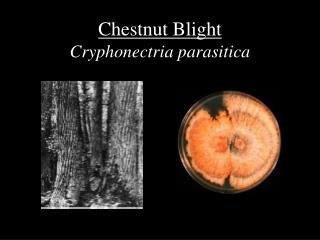
Treated cankers on infected trees were callusing and hypovirulent strains of the pathogen spread to non-treated chestnuts. The present study was conducted as a follow-up to previous studies and to other studies conducted in France to reinforce our confidence in the efficiency of this control measure. Those were the first significant successes in attempting to control this important disease (Grente and Berthelay-Sauret 1969, 1978). The first application of a biological programme for the control of chestnut blight using hypovirulent strains of the pathogen in Europe was conducted in southern France in the yrs 1967 to 1972, and it yielded surprisingly positive results. The size (width and length) of treated and non-treated cankers was measured in mm. The effect of treatment was evaluated visually (callus formation, enlargement of cankers outside the line of treatment). Non-treated cankers in all localities (on the same stems and also on separated trees) were used as controls to compare the effect of biological control and to assess the natural spread of hypovirulence. The degree of healing of the cankers treated in the yrs 1992 to 1997 was evaluated once the yr after treatment. The holes were then sealed with grafting wax. Cubes of malt agar with hypovirulent mycelium were also used. Pellets containing the hypovirulent mycelium, prepared specifically for our trials by the Fytofarm (Phytofarm) of Bratislava and according to Grente (1965), were applied directly into the inoculation holes. These holes (5-8 mm x 5-10 mm, depending on the bark thickness) were made using an auger with flat edges so as to establish close contact between the hypovirulent mycelium of the fungus and the virulent mycelium causing the canker. Inoculation holes were made around the cankers, between the healthy and attacked parts of the host, 50 to 70 mm apart. Only cankers that were accessible from the ground and by using an extension ladder were treated. Treatments were performed on stems and branches of trees infected by virulent strains of the fungus that were ranked in categories of injury one to three. To treat cankers with hypovirulent strains converted with French hypoviruses (INRA Clermont-Ferrand) and to evaluate the efficiency of biological control in the monitored localities.

sativa and the amount of infection by C. parasitica in the Stiavnicko-krupinská region of Slovakia in Modrý Kamen, Dolné Príbelce, Horné Príbelce, Stredné Plachtince and Horné Plachtince The final effect of the hypoviruses is to reduce mortality of infected trees.The aim of this study was: Hypovirulent strains consistently contain hypoviruses whose genetic material is dsRNA (Anagnostakis and Day 1979). The fans do not impair the cambial tissue because the host can respond vigorously to the hypovirulent fungus, preventing deeper penetration with the usual lethal consequences (Elliston 1985). Residues of fan-formed mycelia of C. parasitica occur only on the exposed wood and within fragments of dead bark adhering to the margins of the openings. Abnormal cankers, from which the hypovirulent strains of the fungus are isolated, consist of exposed sapwood bordered by vigorous callus, with superficial infections radiating from the margins of the openings. The trees respond when infected by the hypovirulent strains by callus formation in the cankers.

Hypovirulent isolates frequently have less pigment when grown in culture, fail to sporulate, and have significantly lower virulence to C. These strains have different physiological and morphological properties (Grente 1965). This biological control procedure is based on virulent and hypovirulent forms of the fungus C.


 0 kommentar(er)
0 kommentar(er)
